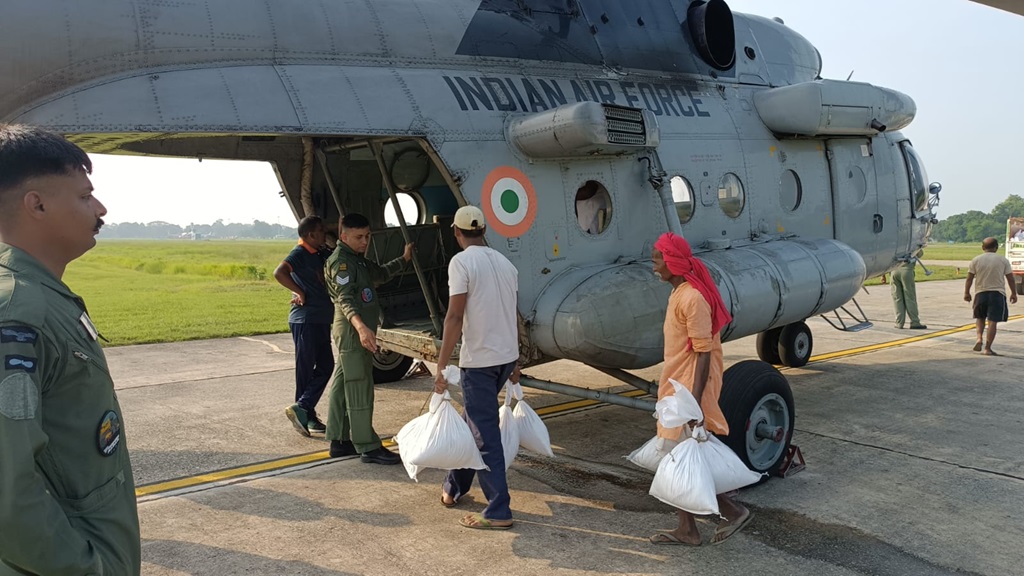Bihar Floods: 16 Districts Affected, Air Force Steps in for Relief Efforts

Patna: Heavy rains in Nepal have caused rivers in Bihar to overflow, leading to severe flooding in 16 districts. Around 10 lakh people have been affected by the floods, with the worst-hit areas being Purnia, Saharsa, Supaul, and Darbhanga. In response, the Indian Air Force has been deployed to provide relief, delivering food packets by helicopter to those stranded in flood-affected regions.
Chief Minister Nitish Kumar conducted an aerial survey of the flood-hit Kosi area on Tuesday to assess the damage. Meanwhile, the Central Government has released the first installment of ₹655.60 crore from the National Disaster Relief Fund to assist those affected by the disaster.
The monsoon has yet to retreat from Bihar, with the Meteorological Department forecasting rain until October 11. Light showers are expected around Dussehra, with heavy rain predicted for eastern Bihar on October 3 and 4. Areas including Supaul, Araria, Kishanganj, Munger, Jamui, Madhepura, Saharsa, Purnia, Katihar, Bhagalpur, Khagaria, and Banka are expected to experience continued rainfall.
In Sitamarhi and Darbhanga, the Air Force dropped dry ration packets to residents of waterlogged villages, where traffic has been completely disrupted. In Muzaffarpur, the Lakhandei dam broke late on Tuesday evening, cutting off 15 villages from their block headquarters.
The floods have caused significant hardship, with eight people reported to have been swept away in different districts, and a woman succumbing to a heart attack. In Supaul, a 3-year-old girl was carried away by the floodwaters while on her grandfather’s shoulders. In Kiratpur, Darbhanga, a teenager and three adults were also swept away. The situation remains critical in Runni Saidpur and Belsand in Sitamarhi, where three more people have gone missing in the floodwaters.
According to the Meteorological Department, Bihar will likely receive normal to above-normal rainfall in October, with temperatures also expected to be above average. The state recorded 218.3 mm of rainfall in September, which is within the normal range. On September 27, the state experienced its highest rainfall, with 340 mm recorded in 24 hours.
While some areas, including Patna, received 25-50% less rainfall, four districts saw above-normal levels, and six districts experienced rainfall close to the average.





